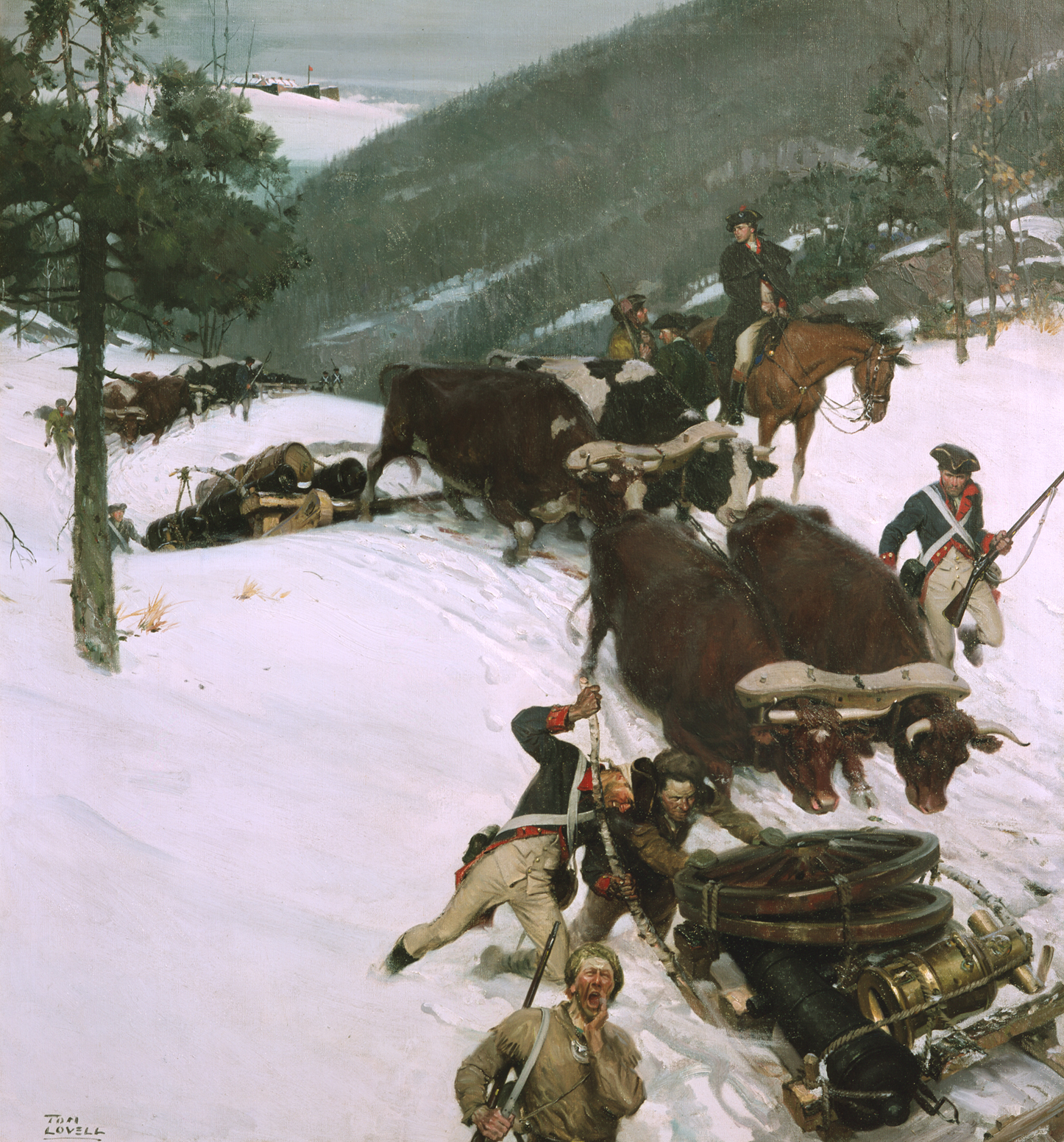---
Early, in our research, we saw a reference in Joseph Felt's book on Ipswich to cannons from Fort Ticonderoga being used at Boston during the Revolutionary War. This British fort has been captured by the Green Mountain Boys of Ethan Allen.
 |
| Traversing winter landscape in New England pulling cannons (took months) |
Yesterday's look at George Washington's role during the Siege of Boston got us to look further. Below, we summarize what happened and provided links to further research.
- Washington Takes Command of the Continental Army - Massassachusetts History's overview.
- Henry Knox Trail - this page shows commemorative markers along the route taken by Knox.
- The Knox Trail - report by the Hudson River Valley History organization about the 1926/7 effort by the States of New York and Massachusetts which provided the map below.
- The guns of Ticonderoga - gives an overview of the event, with the consequence of the British rmoving their huge force and ships.
- Dragging cannon from Fort Ticonderoga to Boston, 1775 - letter from Knox to Washington written along the way.
- Henry Knox Cannon Trail - there are two Revolutionary War Routes in the Hudson River Valley covered in the page. The second is the Washington-Rochambeau Revolutionary Route related to northern events in the war during which the French joined in the fray. After success in the north, the majority of the focus was the south.
There's a lot more to look at. But, the cannons had arrived by March, later than expected. Once they were in place, the British commander opted for them to leave. But, looking at the size of the equipment available to the British, one is amazed by the success of the maneuver.
- On the night of March 4, the cannons were moved into position on Dorchester Heights, overlooking the city and the harbor. On March 5, when British General William Howe learned what the colonists had done, he exclaimed that “these fellows have done more work in one night than I could make my army do in three months.” On March 6, 1776, he gave the order to prepare for evacuation. On Saint Patrick’s Day 1776, 120 ships carried 9,000 British soldiers, 1,200 dependents, and 1,100 Loyalists out of Boston. On the deck of one ship, the merchant George Erving told other Loyalists, “Gentlemen, not one of you will ever see that place again.”
Remarks: Modified: 08/01/2025
08/01/2025 - Edit typos; changed Felt's book from Salem to Ipswich; added image of the cannons being pulled by oxen, horse, and men.
No comments:
Post a Comment